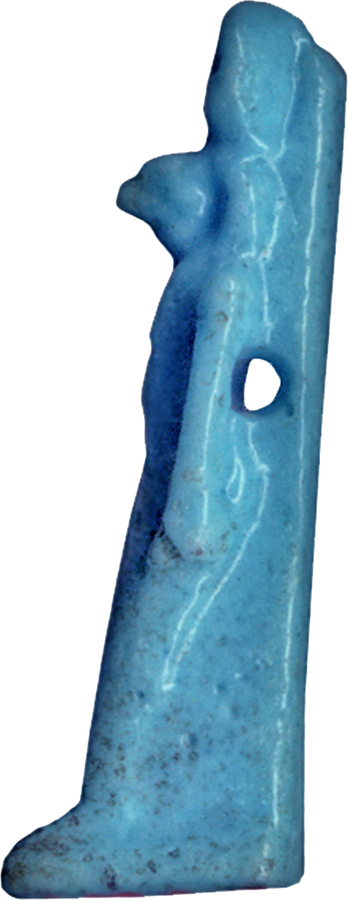Standing Re-Harakhte
While Egyptian jewelry was worn in daily life, most of the examples known today came from tombs, where they adorned mummies. Amulets provided magical protection for the wearer in both life and death. The consistent color and workmanship of the 13 light-blue faience figures of gods owned by the Walters (this one and Walters 48.1676, 48.1677, 48.1679, 48.1680, 48.1684, 48.1701, 48.1702, 48.1704, 48.1705, 48.1709, 48.1710 and 48.1711) suggest that they came from the same workshop. Represented here is the falcon-headed Horus.
Provenance
Provenance (from the French provenir, 'to come from/forth') is the chronology of the ownership, custody, or location of a historical object. Learn more about provenance at the Walters.
Henry Walters, Baltimore [date and mode of acquisition unknown]; Walters Art Museum, 1931, by bequest.
Exhibitions
| 2010 | Bedazzled: 5,000 Years of Jewelry. El Paso Museum of Art, El Paso. |
| 2006-2009 | Bedazzled: 5,000 Years of Jewelry from the Walters Art Museum. Frist Center for the Visual Arts, Nashville; The John and Mable Ringling Museum of Art, Sarasota; The Walters Art Museum, Baltimore. |
| 1979-1980 | Jewelry - Ancient to Modern. The Walters Art Gallery, Baltimore. |
Conservation
| Date | Description | Narrative |
|---|---|---|
| 7/23/1959 | Treatment | cleaned |
| 10/7/1974 | Treatment | cleaned |
| 11/1/1978 | Treatment | cleaned; other |
| 9/3/1998 | Examination | examined for condition |
| 4/12/2006 | Treatment | cleaned; coated |
Geographies
Egypt (Place of Origin)
Measurements
H: 1/2 x D: 1/16 in. (1.29 x 0.01 x 0.2 cm)
Credit Line
Acquired by Henry Walters, by 1931
Location in Museum
Not on view
Accession Number
In libraries, galleries, museums, and archives, an accession number is a unique identifier assigned to each object in the collection.
In libraries, galleries, museums, and archives, an accession number is a unique identifier assigned to each object in the collection.
48.1708








